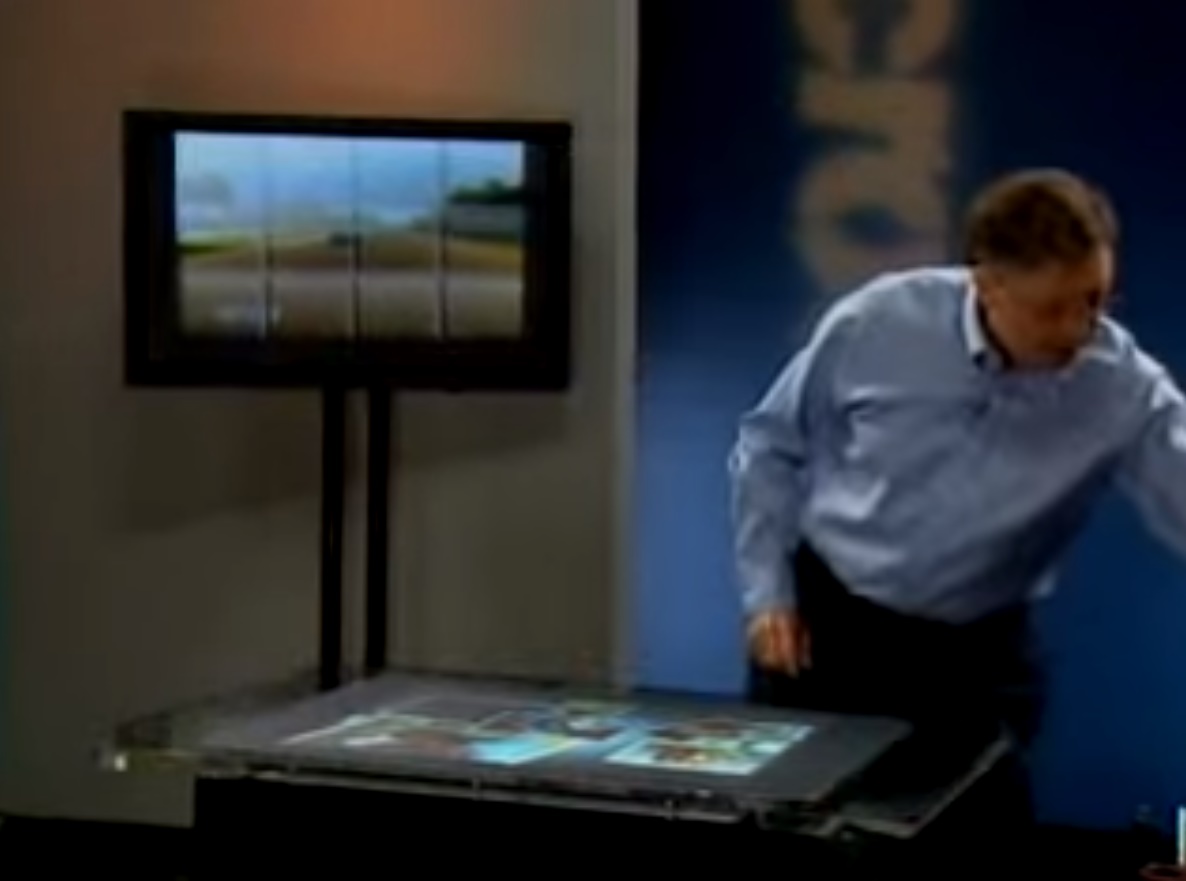Remember the original Microsoft Surface table? Now it runs Windows 10!

When Microsoft came up with the original concept for Surface, it was a much different product than the slick, thin and lightweight ultraportable tablet we have today.
Microsoft Surface was first unveiled in 2007, by Bill Gates, who gave a demonstration of the capabilities of a product he envisioned as one day being present in every home, along with many other variants to the same concept, embedded in the smart home of the future.
Fast forward to 2017, Windows Central recently posted a video where they showcase a Surface 1.0 table, in which they installed successfully Microsoft Windows 10.
The experience is a little laggy, but it works on many levels, except that Windows 10 does nto support any of the scanning and object recognition that were port of the original software built into Windows Vista.
With that said, aside from the inability to recognize and interact with objects, or read text in real-time, Surface 1.0 with Windows 10 works in the same way as any other Windows tablet, only slower.
Originally running a 32-bit version of Windows Vista, Surface 1.0 was powered by a 2.13GHz Intel Core Duo CPU. It’s configuration includes 2GB or DDR2 RAM, 160GB HDD, and its graphic processing is handled by an ATI Radeon X1650 with 256MB of memory.
The 30 inch display of the Surface 1.0 could support a resolution of 1024 x 768, with XGA, RGB analog video and RCA analog audio component outputs.Other connectors include four USB ports, and an Ethernet port.
The great thing about Surface 1.0, even in all its lod-def glory, and high noise levels when in operation, is that it detects everything that is placed on it, and it’s capable of scanning text and recognize different items, and tell the difference between human hands and fingertips, from common objects. The secret is an array of IR sensors, and cameras, which may not be as responsive as a modern Surface Pro, but the ability to scan and detect different objects on contact is still something that no commercial touchscreen device can do the way the original Surface 1.0 does it.
These capabilities are also powered by a special Surface Shell, which is a custom shell that operates atop Windows Vista, to allow all the functionalities that make Surface 1.0 such a unique device.
The downside, unfortunately for those who were able to shell out anywhere close to the $10,000 price tag of the Surface 1.0, is that most apps are simply demonstrative, with a number of them no longer supported.
Ready to shop?
If you are looking for the ultimate Windows 10 tablet, PortableOne has the best deals on Surface Pro 3 and Surface Pro 4, as well as a full range of accessories.